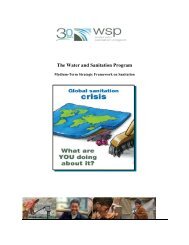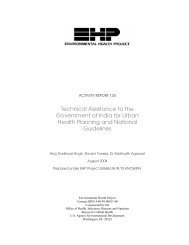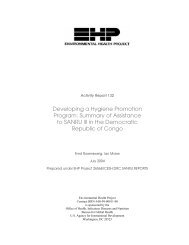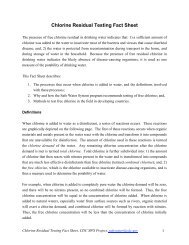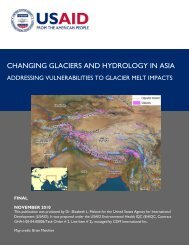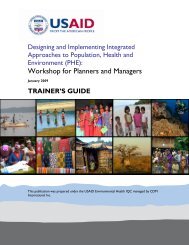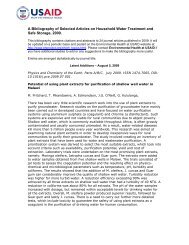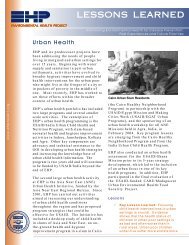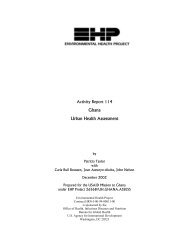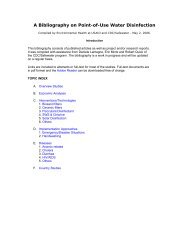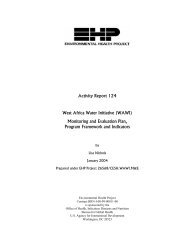Malaria Epidemic Forecasting and Preparedness Manual
Malaria Epidemic Forecasting and Preparedness Manual
Malaria Epidemic Forecasting and Preparedness Manual
You also want an ePaper? Increase the reach of your titles
YUMPU automatically turns print PDFs into web optimized ePapers that Google loves.
If we get unusually high rainfall in any month (more than 2xthe average), raise the alert level by one step.The alert level should stay high until there have been at leasttwo months without unusually high rainfall. Then it should goback down a step.In Figure 5 we see the actual monthly rainfall plotted as bars,<strong>and</strong> the months that had more than 2 times the average rain areshaded grey. The monthly OPD cases are shown as a line.Whenever there was a month with above average rain, it wasfollowed two to three months later by a rise in the number ofcases. See for example, rain in April 1996, which was followedby a sharp rise in cases in June <strong>and</strong> July 1996. Abnormal rain inAugust 1998 was followed by a peak of cases in October 1998.Action to be taken after a short termwarningThis is the most critical stage for preventive action. There isabout a two month lag between rain falling <strong>and</strong> a rise in malariacases. In the areas where unusually high rainfall has beendetected:1. Start spraying or increase number of houses/villagessprayed2. Increase amount of larviciding <strong>and</strong> source reduction3. Finish annual net impregnation if not already done4. Check stocks for adequate anti-malarial drug supply5. Inform health facilities <strong>and</strong> villages of the increased riskEritrea <strong>Epidemic</strong> <strong>Manual</strong>, June 2003 15



